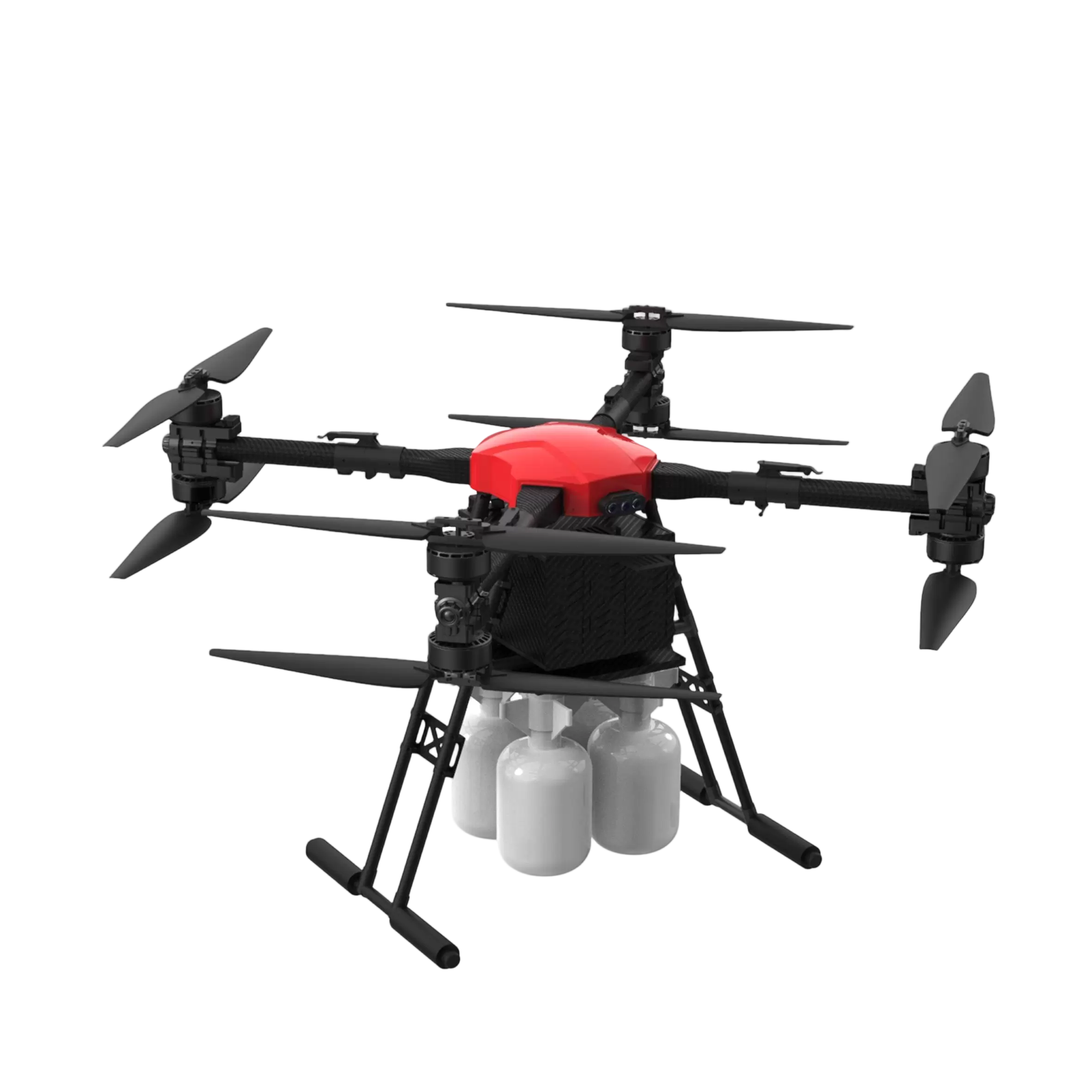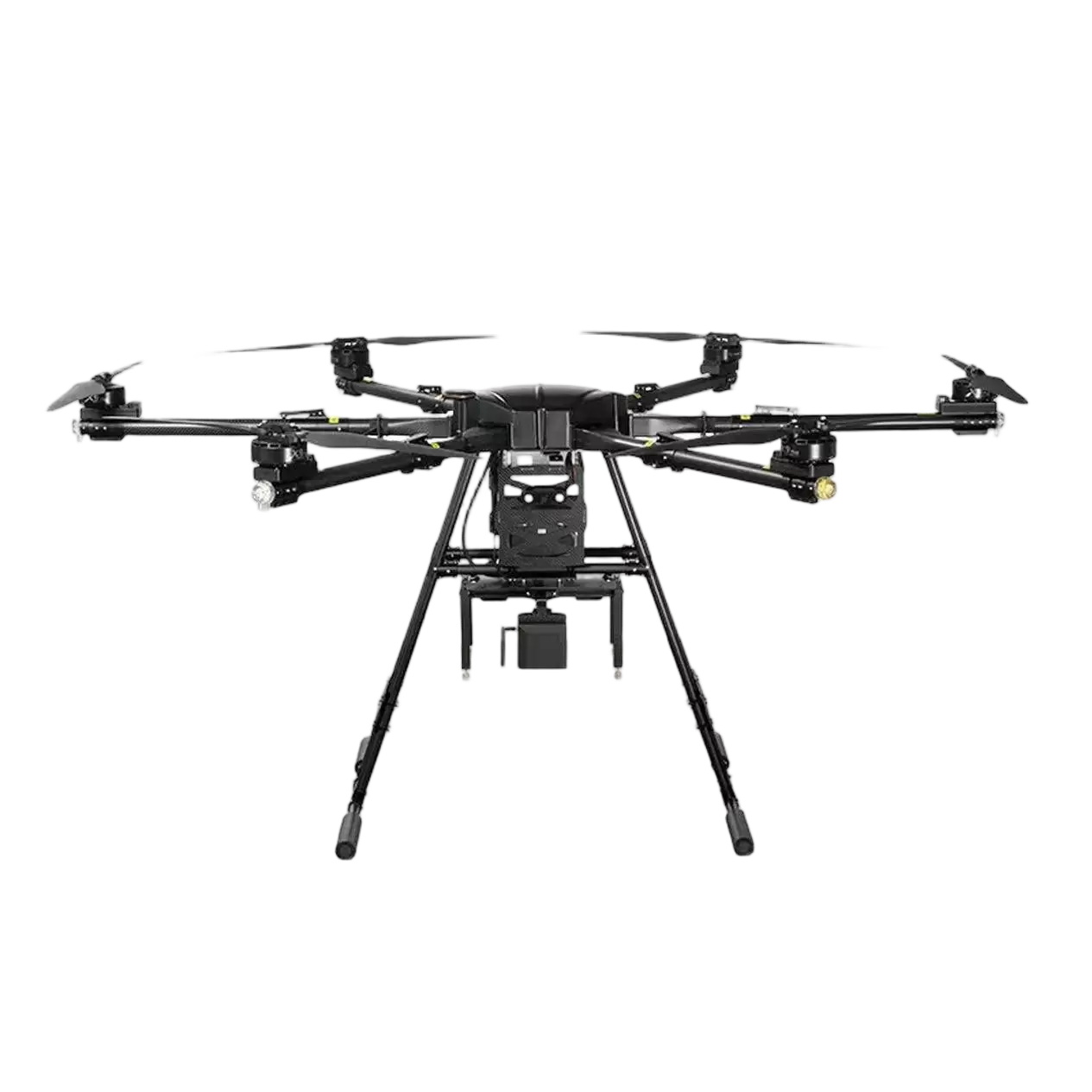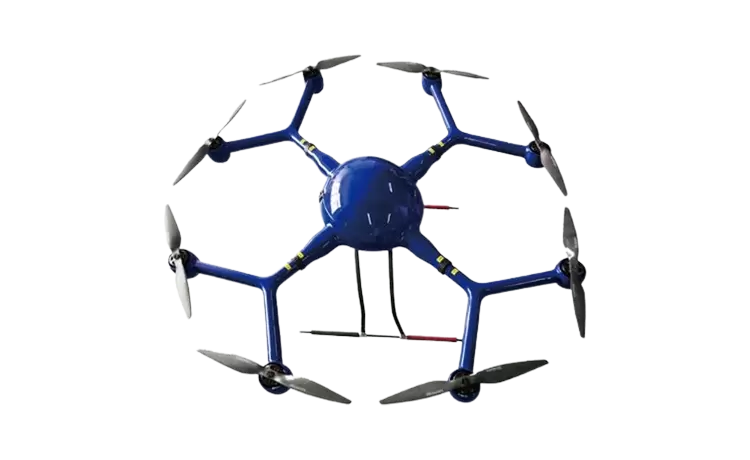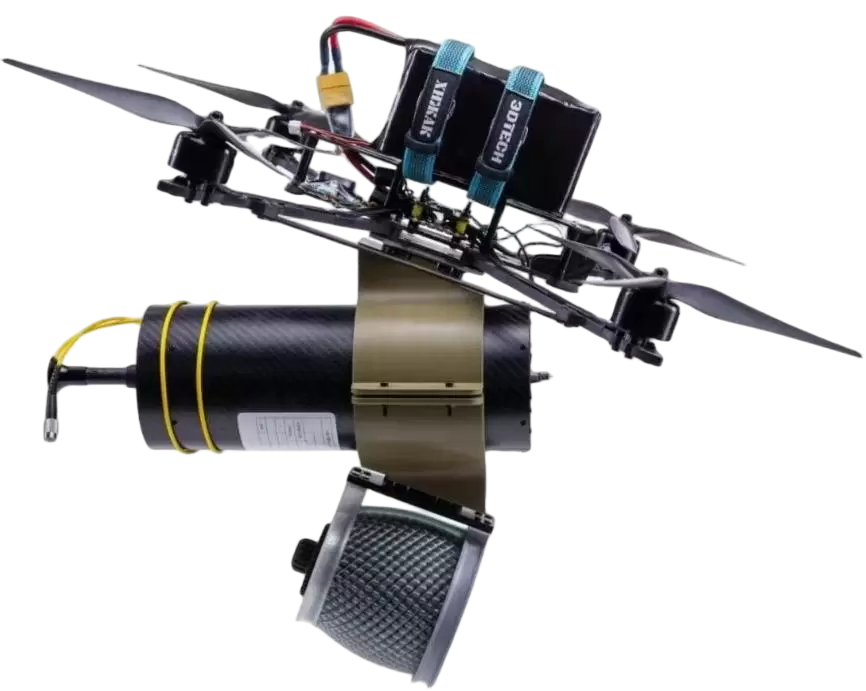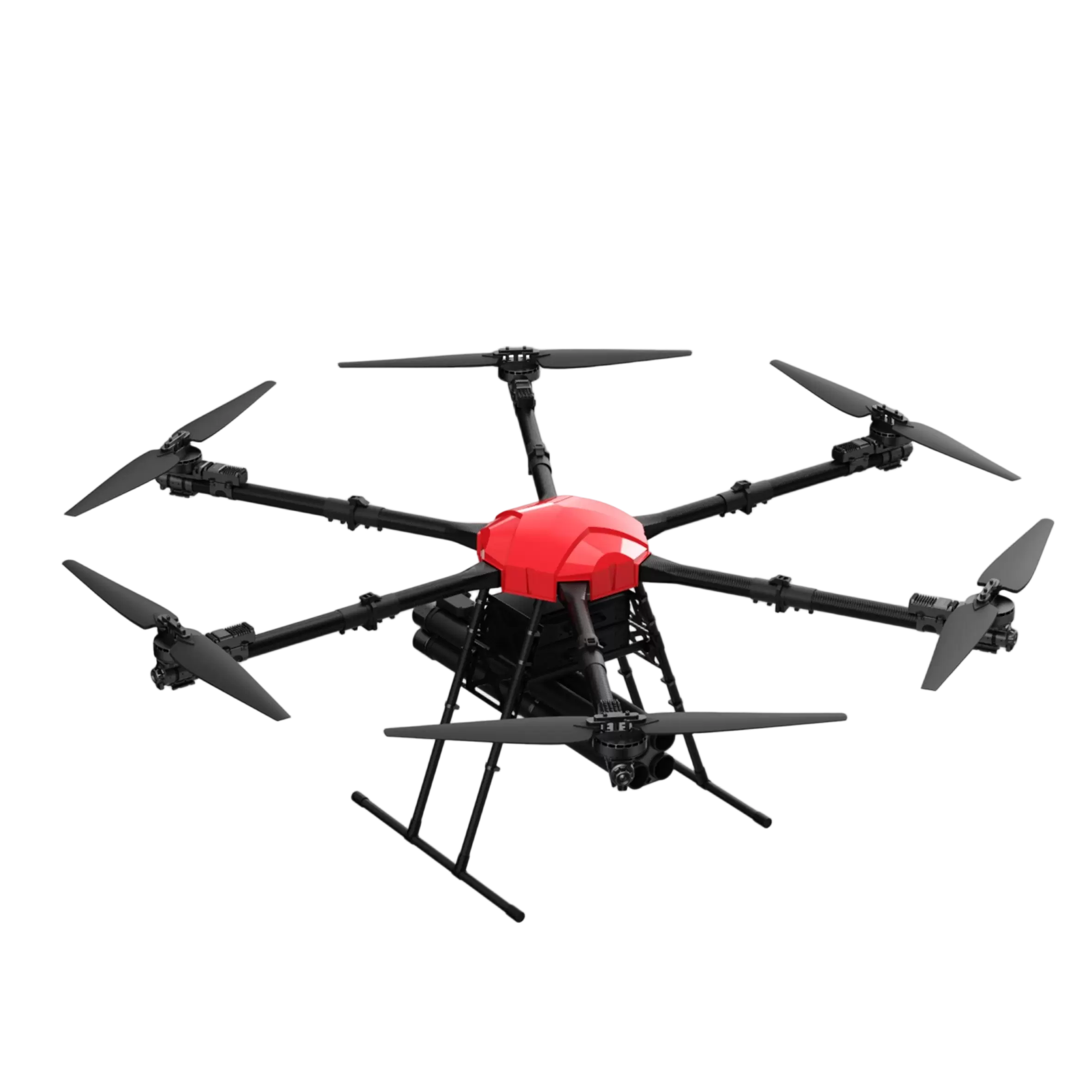Introduction
In the rapidly evolving landscape of technological innovation, fiber optic drones have emerged as a remarkable and game - changing technology. These drones are not just your average unmanned aerial vehicles; they are uniquely equipped with fiber optic cables that enable a host of extraordinary capabilities.
Unlike traditional drones that rely on wireless communication, which can be limited by range, interference, and data transfer speed, fiber optic drones establish a physical connection to the ground station through a thin, flexible fiber optic cable. This cable, made of high - purity glass or plastic, is capable of transmitting data at the speed of light. This means that fiber optic drones can send and receive large amounts of data in real - time, including high - definition video feeds, sensor readings, and control commands, without the latency and signal degradation often associated with wireless communication.
The combination of the mobility of a drone and the high - speed, reliable data transmission of fiber optics has opened up a world of possibilities. From industrial inspections to scientific research, disaster response to military operations, fiber optic drones are making a significant impact across a wide range of applications. As we delve deeper into the capabilities and applications of these remarkable devices, it becomes clear that they are not only a technological marvel but also a practical solution to many of the challenges faced in modern industries and society.
I. Military Applications
A. Reconnaissance and Surveillance
In military reconnaissance and surveillance, fiber optic drones offer several distinct advantages. Their fiber optic - based communication system provides a high - level of resistance to electromagnetic interference. In a battlefield environment filled with a complex mix of electronic signals from various sources such as radar systems, communication jammers, and other military equipment, traditional wireless - controlled drones often struggle to maintain a stable connection. Fiber optic drones, on the other hand, can operate smoothly because the optical signals transmitted through the fiber optic cable are immune to these electromagnetic disruptions.
Moreover, they can achieve long - distance and stable video transmission. For example, in a military operation in a mountainous region, a fiber optic drone was deployed to conduct reconnaissance on the enemy's positions. It was able to transmit high - definition video feeds over a distance of several kilometers back to the ground control station. The soldiers at the base could clearly observe the movement of enemy troops, the layout of their defenses, and the types of weapons they were using in real - time. This real - time and high - quality visual information was crucial for the military to make informed decisions, plan their strategies, and prepare for potential combat scenarios.
B. Precision Strike Support
Fiber optic drones play a vital role in providing real - time and accurate information for precision strikes. They can act as an "eye in the sky," closely monitoring the target area and relaying detailed information about the target's location, movement, and surrounding environment.
In a recent military operation, a fiber optic drone was used to support a precision - strike mission against a high - value target. The drone continuously hovered above the target area, sending back live video and sensor data. The operators on the ground, by analyzing this data, were able to precisely identify the target's position within a complex urban area. This information was then transmitted to the missile - launching unit. With the highly accurate data provided by the fiber optic drone, the missile was launched and successfully hit the target with pinpoint accuracy, minimizing collateral damage and maximizing the effectiveness of the strike. This real - world example clearly demonstrates the crucial role that fiber optic drones can play in modern - day precision - strike operations.
II. Industrial Applications
A. Infrastructure Inspection
Fiber optic drones have become invaluable tools in infrastructure inspection, revolutionizing the way we assess the condition of vital structures such as bridges and power lines.
In bridge inspection, traditional methods often involve the use of scaffolding or cranes, which are not only time - consuming but also pose significant safety risks to the inspection teams. Fiber optic drones, however, can easily navigate around the complex structures of bridges. They are equipped with high - definition cameras and various sensors, such as infrared cameras and laser scanners. These sensors can detect even the smallest cracks, signs of corrosion, or structural weaknesses in the bridge components. For example, in a recent inspection of an aging bridge, a fiber optic drone was able to quickly identify hair - line cracks on the underside of the bridge deck that were previously undetected by traditional visual inspections. The high - speed data transmission via the fiber optic cable allows the real - time video feed and sensor data to be analyzed by engineers on the ground, enabling them to make prompt decisions about the necessary maintenance and repair work.
When it comes to power line inspection, fiber optic drones offer distinct advantages over traditional methods. Manual inspection by climbing poles or using helicopters is costly, time - consuming, and dangerous. Fiber optic drones can fly along power lines, closely examining the condition of the wires, insulators, and towers. The infrared sensors on the drone can detect overheating components, which may indicate a potential fault in the electrical system. In a large - scale power grid inspection project, a fiber optic drone covered a vast area of power lines in a single day, while traditional methods would have taken weeks to complete the same task. By quickly identifying issues such as damaged insulators or loose connections, fiber optic drones help prevent power outages and ensure the reliable operation of the power supply.
B. Mining and Quarrying
In the mining and quarrying industries, fiber optic drones play a crucial role in enhancing operational efficiency and safety.
For monitoring mining operations, fiber optic drones can provide real - time aerial views of the entire mining site. They can track the movement of mining equipment, monitor the progress of excavation, and ensure that the mining activities are carried out in accordance with the planned layout. For instance, in an open - pit mining operation, a fiber optic drone can continuously monitor the digging process, alerting the operators if there are any deviations from the approved mining plan. This helps to prevent over - excavation or damage to surrounding areas.
Safety is a top priority in mining, and fiber optic drones contribute significantly to this aspect. They can be used to inspect dangerous areas, such as the slopes of mining pits, which are difficult and risky for human inspectors to access. By using high - resolution cameras and LiDAR (Light Detection and Ranging) sensors, the drone can detect signs of instability, such as rockfalls or landslides, in advance. In case of a mining accident, fiber optic drones can quickly reach the scene and provide live video feeds of the affected area. This information is vital for rescue teams to assess the situation and plan their rescue operations, potentially saving lives and reducing the impact of the accident.
Moreover, fiber optic drones can also assist in optimizing the mining process. By analyzing the data collected from the mining site, such as the distribution of ore deposits and the condition of the mining equipment, mining companies can make more informed decisions. For example, the data from the drone can help determine the most efficient extraction methods, allocate resources more effectively, and ultimately increase the productivity of the mining operation.
III. Environmental Applications
A. Wildlife Monitoring
Fiber optic drones are playing an increasingly important role in wildlife monitoring, revolutionizing the way we study and protect our planet's diverse fauna. In tracking animal migrations, these drones can cover vast areas that are otherwise difficult to monitor. For example, during the annual wildebeest migration in Africa, which involves millions of animals moving across the Serengeti - Mara ecosystem, fiber optic drones can be deployed to follow their movement patterns. Equipped with high - resolution cameras and thermal sensors, they can capture the exact route of the migration, the timing of their crossings of rivers and other geographical barriers, and any changes in their traditional migration paths over time. This data is crucial for understanding the impact of factors such as climate change, habitat loss, and human - wildlife conflict on these migratory species.
When it comes to monitoring habitat changes, fiber optic drones can provide high - definition and real - time images of wildlife habitats. In a rainforest ecosystem, for instance, the drone can fly over large tracts of forest and transmit live video feeds back to conservationists on the ground. By analyzing these images, they can detect deforestation, encroachment by human settlements, and changes in water bodies within the habitat. These insights enable conservationists to take proactive measures to protect the habitats, such as lobbying for stricter anti - deforestation laws or implementing habitat restoration projects. Overall, the data collected by fiber optic drones in wildlife monitoring is invaluable for making informed decisions to safeguard the future of wildlife species.
B. Disaster Monitoring
In the face of natural disasters such as fires and floods, fiber optic drones are emerging as essential tools for disaster management.
During forest fires, which are becoming more frequent and intense due to climate change, fiber optic drones can be quickly deployed to the affected areas. They can fly close to the fire front, providing real - time video feeds of the fire's spread. The high - speed data transmission via the fiber optic cable allows fire - fighting teams to monitor the direction of the fire, the intensity of the blaze, and the areas that are most at risk. For example, in a large - scale forest fire in California, a fiber optic drone was used to identify hotspots that were difficult to access on the ground. This information was then used to allocate firefighting resources more effectively, such as directing water - dropping aircraft to the most critical areas.
In flood - affected regions, fiber optic drones can play a crucial role in assessing the extent of the flooding. They can fly over flooded areas, providing live images of the flooded streets, houses, and infrastructure. Rescue teams can use this information to identify areas where people may be trapped and plan their rescue operations accordingly. Additionally, the drone can monitor the water levels in real - time, helping authorities to predict the flood's progression and issue timely evacuation warnings. In a recent flood in a coastal city, a fiber optic drone was used to survey the entire flooded area within a few hours. The data collected by the drone was used to create a detailed map of the flooded regions, which was then used to coordinate the rescue efforts and ensure the safety of the affected population.
IV. Communication Applications
A. Temporary Communication Networks
In remote areas where traditional communication infrastructure is either non - existent or severely limited, fiber optic drones can be deployed to establish temporary communication networks. These areas, such as deep - forest research stations, isolated mountain villages, or remote island communities, often struggle to maintain reliable communication links.
During emergency situations like natural disasters (earthquakes, tsunamis, or typhoons), the existing communication systems are frequently damaged or overloaded. Fiber optic drones can quickly be dispatched to the affected area. They can be flown to strategic locations, such as high - ground or the center of a disaster - stricken town, and then lower the fiber optic cable to the ground, where it can be connected to a local communication hub. This allows for the rapid restoration of communication services, including voice calls, data transfer, and internet access. For example, after a major earthquake in a mountainous region, a fiber optic drone was used to set up a temporary communication network within hours. Rescue teams could communicate with each other, coordinate their efforts, and contact external support. Survivors were also able to get in touch with their families and access emergency information, which was crucial for their safety and well - being.
B. 5G and Beyond Network Deployment Support
Fiber optic drones play a significant role in the deployment and optimization of 5G and future - generation networks.
For 5G network deployment, the installation of small cells is a key aspect. These small cells need to be precisely located and connected to the main network infrastructure. Fiber optic drones can assist in this process. They can carry the fiber optic cables to the installation sites of small cells, even in hard - to - reach areas such as rooftops of tall buildings or in complex urban environments. By using drones, the installation process can be made faster and more efficient, reducing the time and cost associated with traditional cable - laying methods.
In terms of signal optimization, fiber optic drones can be equipped with signal - measuring sensors. They can fly around the area covered by a 5G network, collecting data on signal strength, interference levels, and network latency. The high - speed data transmission via the fiber optic cable enables real - time analysis of this data on the ground. Based on the analysis, network operators can make adjustments to the network, such as re - positioning antennas or adjusting the power levels of the base stations, to improve the overall performance of the 5G network. As we look towards future - generation networks, the capabilities of fiber optic drones in network deployment and optimization will become even more crucial, helping to meet the increasing demands for high - speed, reliable communication.
V. Challenges and Future Prospects
A. Current Challenges
Despite their remarkable capabilities, fiber optic drones currently face several challenges that limit their widespread adoption and optimal performance.
One of the primary issues is the high cost. The production of fiber optic cables, especially those with high - quality data - transmission capabilities, involves complex manufacturing processes. Additionally, the development of specialized fiber - optic - compatible equipment for drones, such as the fiber - releasing mechanisms and the ground - based control stations, contributes to the overall high cost. This makes fiber optic drones relatively expensive compared to traditional wireless - controlled drones, which can be a significant barrier for some users, especially those with limited budgets.
Another challenge is the relatively short flight time and limited range. The weight of the fiber optic cable, as well as the power - consuming equipment related to fiber - optic communication, restricts the amount of battery capacity that can be allocated for flight. As a result, fiber optic drones often have a shorter flight time compared to their wireless counterparts. For example, a typical fiber optic drone might have a flight time of only 20 - 30 minutes, while some high - end wireless drones can stay in the air for an hour or more. The length of the fiber optic cable also limits the range of the drone. Although fiber optic cables can transmit data over long distances, in practical applications, the physical handling and the risk of cable damage limit the maximum length that can be deployed. Currently, most fiber optic drones have a range of a few kilometers, which may not be sufficient for some long - range operations.
The vulnerability of the fiber optic cable is also a major concern. Fiber optic cables are thin and delicate, and they can be easily damaged by sharp objects, strong winds, or collisions. In a real - world scenario, during a disaster - monitoring mission in a forest area, a fiber optic drone's cable got caught on a tree branch, causing the cable to break and disrupting the data transmission and control of the drone. Even minor bends or kinks in the fiber optic cable can lead to signal attenuation, reducing the quality of data transmission. This requires careful handling during the deployment and operation of fiber optic drones, and also calls for the development of more durable and damage - resistant fiber optic cables.
B. Future Developments
Looking ahead, significant technological advancements are expected to address these challenges and further expand the capabilities of fiber optic drones.
In terms of materials, researchers are actively exploring the development of new, more lightweight and durable fiber optic materials. For instance, the use of nanomaterials, such as carbon nanotubes, in the production of fiber optic cables shows great potential. Carbon nanotube - enhanced fiber optic cables could be stronger, lighter, and more resistant to environmental factors. This would not only reduce the weight burden on the drone, allowing for longer flight times and greater payload capacities, but also increase the reliability of the cable, minimizing the risk of damage during operation.
Another area of development is in the improvement of power - supply and energy - storage technologies. The advent of more efficient batteries, such as solid - state batteries, could revolutionize the flight performance of fiber optic drones. Solid - state batteries have higher energy - density compared to traditional lithium - ion batteries, which means they can store more energy in a smaller and lighter package. This would enable fiber optic drones to fly for longer periods without sacrificing payload capacity or adding excessive weight. Additionally, the development of wireless charging technologies could also play a role in extending the operation time of fiber optic drones. Drones could potentially be charged wirelessly while in flight or when hovering at a certain location, eliminating the need to return to the ground for recharging.
In the realm of communication technology, the integration of fiber - optic communication with other emerging wireless communication technologies is another promising direction. For example, the development of hybrid communication systems that can seamlessly switch between fiber - optic and 5G or future - generation wireless communication depending on the operational requirements. In areas where fiber - optic connection is not feasible or practical, the drone could switch to a reliable wireless communication mode, ensuring continuous operation and data transmission. This would enhance the flexibility and adaptability of fiber optic drones in different environments and applications.
Furthermore, the future of fiber optic drones may see a greater integration of artificial intelligence (AI) and machine learning (ML) technologies. AI - powered flight control systems could optimize the flight path of the drone in real - time, taking into account factors such as wind speed, terrain, and potential obstacles. ML algorithms could be used to analyze the large amounts of data collected by the drone, enabling more accurate and intelligent decision - making. For example, in wildlife monitoring, AI - based image recognition algorithms could automatically identify different species of animals, track their behavior patterns, and detect any signs of distress or unusual activity, greatly enhancing the efficiency and effectiveness of conservation efforts.
As these technological advancements are realized, fiber optic drones are likely to find even more diverse applications. In the future, we may see them being used in space exploration, where their high - speed data - transmission capabilities could be crucial for sending back real - time images and scientific data from distant planets or celestial bodies. In urban planning, fiber optic drones could provide detailed 3D mapping of cities, helping urban planners to design more sustainable and efficient cities. The potential for fiber optic drones is vast, and with continued research and development, they are set to play an even more significant role in shaping our future.
Conclusion
Fiber optic drones have emerged as a revolutionary technology with a wide - ranging impact across multiple sectors. Their unique combination of aerial mobility and high - speed, reliable fiber - optic communication has enabled them to perform tasks that were previously challenging or impossible for traditional drones or other monitoring and communication methods.
In the military, they have enhanced reconnaissance and surveillance capabilities, providing real - time, interference - free data in high - stakes battlefield scenarios. Their role in precision - strike support has significantly improved the accuracy and effectiveness of military operations. In industrial applications, fiber optic drones have made infrastructure inspection safer, faster, and more accurate, while also contributing to increased efficiency and safety in mining and quarrying operations.
From an environmental perspective, these drones are invaluable tools for wildlife monitoring and disaster response. They help us better understand and protect our planet's ecosystems and enable more effective management of natural disasters, potentially saving lives and reducing environmental damage. In communication, fiber optic drones are bridging the gap in remote areas and supporting the deployment and optimization of next - generation networks.
Despite the current challenges of high cost, limited flight time and range, and cable vulnerability, the future of fiber optic drones looks promising. With ongoing research and development in materials science, power - supply technologies, communication systems, and artificial intelligence, these challenges are expected to be overcome. As a result, fiber optic drones will likely find even more diverse applications, further revolutionizing industries and enhancing our ability to address complex global challenges. The potential of fiber optic drones is vast, and they are set to play an increasingly significant role in shaping the future of various fields.






